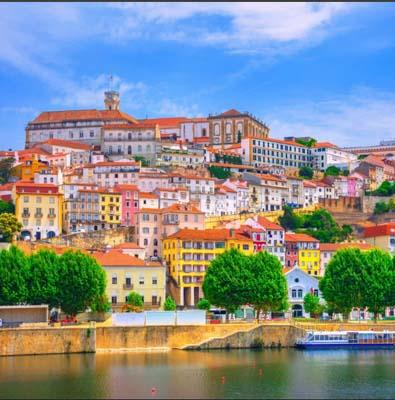
Portugal comes up with huge £2.9m plan to force tourists to spread out
Lisbon: A new circular hiking trail is being opened in Portugal to combat over-tourism. Portugal’s renowned tourist hotspots, such as Lisbon and the Algarve, are often overwhelmed with visitors.
In response, a new hiking trail, Palmilhar Portugal (Walking Portugal), aims to restore balance by drawing tourists to lesser-known regions.

This project will become the world’s longest circular hiking route, spanning 3,000 kilometres and traversing 100 lesser-known beauty spots across the country.
The brainchild of walking enthusiast and communication design consultant Ricardo Bernardes, Palmilhar Portugal is designed to “redistribute tourism to parts of Portugal that are currently little known.” Yellow vintage tram on the street in Lisbon, Portugal.
The route, although still in development, promises a unique way to experience Portugal’s diverse landscapes and cultural heritage.
The inaugural section of the trail will open in Alenquer, a small town just north of Lisbon, this July.
The project will then expand to the coastal Alentejo in the south and the mountainous Trás-os-Montes in the north, with 15 routes expected to be open by the end of the year. The trail is anticipated to be fully completed within three years.
Bernardes was inspired to create this trail after pondering the idea of a continuous path encircling the entire country.
While not the longest trail in the world – a title held by Canada’s 24,000 km Great Trail – Palmilhar Portugal will be the longest circular walk globally, comparable in length to Europe’s Via Francigena.
The €3.5 million (£2.96 million) project, primarily pedestrianised and devoid of tarmac, will also accommodate cyclists on certain segments and aims to include accessible trails for people with reduced mobility.
The route will be complemented by an app providing up-to-date information on upcoming locations, and booking options for accommodations, meals, and tickets to various events.
Additionally, a digital and physical ‘passport’ system, allowing hikers to collect stamps along the trail, is in development.
Alenquer: Known as ‘crib town’ due to its amphitheatre shape, Alenquer offers a rich blend of archaeology, palaeontology, and history, alongside wine tastings from local vineyards. The town’s main tourist event, the Fair of the Ascension, takes place annually in May or June.
Alentejo: Later in the year, the trail will extend to the sparsely populated southern coastal region of Alentejo. This area boasts 100 km of national parks, protecting the unspoiled coastline, natural harbours, dolphin-watching opportunities, wild horses, and some of the world’s largest cork oak tree forests.
Trás-os-Montes: By the end of 2024, the route will include the remote Trás-os-Montes region in the northeast. Known locally as the Hot Land area, it features a UNESCO World Heritage Site and a biosphere reserve. Visitors can expect a pastoral landscape of olive groves, orchards, and vineyards, along with ancient almond trees, hidden gorges, and carved granite pigs.
Palmilhar Portugal is a collaborative effort requiring investment and participation from local councils and businesses. As the project progresses, it promises to offer tourists a comprehensive and immersive experience of Portugal’s lesser-known yet equally captivating destinations.
